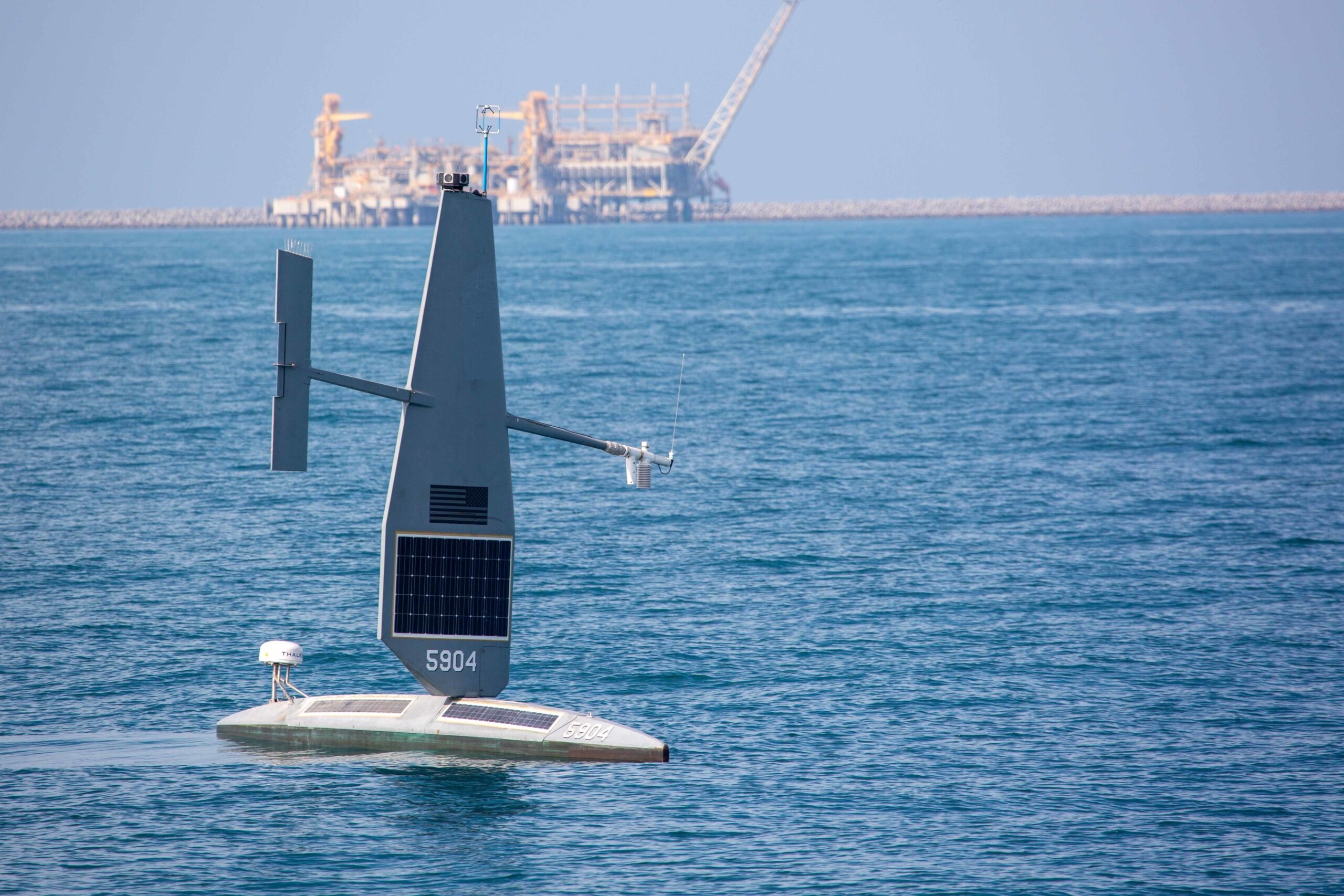
U.S. Deputy Defense Secretary Kathleen Hicks’ May 6th Replicator announcement signals that the Navy’s effort to fast-track small uncrewed surface vessel (sUSV) acquisitions and fleet integration is well underway. The Pentagon’s statement marks an “execution milestone” for the initiative with the selection of AeroVironment’s Switchblade-600 loitering uncrewed aerial system (UAS) munition and three-pronged uncrewed systems approach of USVs, UAS, and counter-uncrewed aerial systems (c-UAS).
Hicks debuted the first iteration of the Replicator initiative in August to produce multiple thousands of all-domain attritable autonomous (ADA2) systems across all warfare domains “within the next 18 to 24 months.” The ambitious timeline marks a goal between February 2025 and August 2025 to acquire these systems across the DoD.
Announcement details show USVs will be acquired through the Production-Ready, Inexpensive, Maritime Expeditionary (PRIME) effort, a solicitation to industry published by the Defense Innovation Unit (DIU) in January. The solicitation requests autonomous payload-carrying sUSVs capable of hundreds of miles of transit, loitering, monitoring, and sprinting up to speeds of 35 knots in a potentially GPS-denied environment. According to the Pentagon, over one hundred companies responded to support the bid with contracts expected this summer.
Securing the funds to support 2024 contracts is an achievement necessary to maintain the aggressive timeline. The announcement states Replicator allocations were $500 million for FY24, with another roughly $500 million requested for FY25. It’s unclear how funding will be allocated to each domain or how much could go toward fielding a sUSV fleet. The DoD FY25 budget request does not designate a specific funding line for the Replicator program but includes resources to support Replicator investments. In a presumably separate funding request, the Navy has asked for over $230 million to procure sUSV platforms as part of its FY25 sUSV Family of Systems line.
Replicator intends to sidestep the normal defense acquisition process to accelerate getting platforms into the hands of military operators as soon as possible. This effort is critical to meet the urgent need for distributed maritime power capabilities in the vast Indo-Pacific region to hedge against China’s naval expansion.
The sUSV Replicator component will also challenge the traditional nature of naval shipbuilding. Typically, building warships takes enormous financial investments and years of development and planning for only a handful of vessels. To achieve the supplemental mass that is now so strategically crucial, the Navy will field USVs at scale quickly. The PRIME solicitation calls for USV manufacturers to churn out some 120 vessels annually at a rate of 10 or more units per month.
A potential contractor, Austin-based startup Saronic sailed its 6-foot Spyglass and 14-foot Cutlass sUSVs at the Navy’s Integrated Battle Problem (IBP) 24.1 off the California coast this past March. The Cutlass, in its first live exercise, employed a third-party payload, Anduril’s ALTIUS loitering munition. During the U.S. Pacific Fleet (USPACFLT) event, multiple Spyglass vehicles conducted networked intelligence, surveillance, and reconnaissance (ISR) operations, classifying and identifying contacts with passive sensors. Saronic and Anduril demonstrated modular interoperability as Anduril’s lattice software operated as the common command and control element for several vehicles during the IBP.
The May 6th tranche one announcement is likely a harbinger of the Navy’s second USV division expected to open this month. The new command will prioritize sUSV development, operations, and manned fleet integration. In February, then-USPACFLT Commander Adm. Samuel Paparo said future Navy sUSVs would help provide sea denial to adversary battlespace access.
The forthcoming unmanned division adds to the Navy’s growing formalized sUSV program. In January, U.S. Naval Forces Central Command stood up Task Group 59.1, a component of Task Force 59 in Bahrain. Task Group 59.1’s is charged with operationalizing unmanned systems for maritime security in the Middle East. In October 2023, Task Force 59 demonstrated a successful live missile fire from an unmanned T-38 Devil Ray USV.
Information about developmental progress and plans for sUSVs, particularly related to Replicator, is purposely limited. But, related events and announcements over the past several months show work is moving forward. The pace of fielding and employing USVs remains a crucial challenge for the Navy. Chinese naval buildup, the increasing use of one-way attack USVs by Ukraine, and a widely recognized unhealthy U.S. shipbuilding capacity emphasize the importance of Replicator’s success. The need to skirt the traditionally slow-paced and insufficient shipbuilding and DoD acquisition process is increasingly clear. Replicator could be a sorely needed part of the solution.
A former naval officer and helicopter pilot, Jon covers a range of Forecast International reports and products, drawing on his 10-year background in military aviation, operations, and education. His previous military assignments include multiple overseas deployments supporting operations in the Arabian Gulf, NATO exercises, and humanitarian missions. Jon’s work is also influenced by his time as a former Presidential Management Fellow and international trade specialist at the Department of Commerce.
Before joining Forecast International, Jon also served as an NROTC instructor and Adjunct Assistant Professor at the University of Texas, where he taught undergraduate courses on naval history, navigation, defense organization, and naval operations and warfare. A lifelong reader and learner, his academic and professional interests include aviation, political and military history, national defense and security, and foreign area studies.




